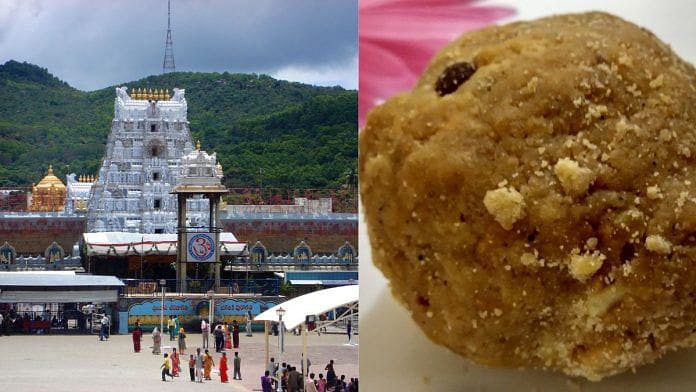
Introduction
Tirupati Laddu is a sacred sweet offering to the Lord at the famous Sri Venkateswara Temple of Tirumala. Passed down by generations as an excellent symbol of divine blessing, laddus have been submitted to Lord Venkateswara since the 18th century, from where a throng of pilgrims rushes throughout the world. A controversy has erupted in recent years that has shaken the very sanctity of this religious offering. Its hallmark has been the claim that the laddus contain animal fat. This has alarmed devotees and ignited a political firestorm as parties and leaders swap charge and counter-charge.
The origin of the animal fat allegation.
The controversy around Tirupati laddus began when it was said that animal fat had been used in making laddus through ghee that had a source of some other than dairy milk product. Given the sanctity of a laddu, this has caused public outcry. Devotees, in general, and especially the vegetarian and Hindu ones, are perturbed at the thought that something as sacred as temple offerings is being polluted through non-vegetarian items.
In any case, the source of these reports remains unknown. It has also been speculated that controversy may have crested up owing to a wrong understanding or rather a conspiracy by certain groups to malign the TTD board of administration of the Tirumala Tirupati temple.
Functions of TTD and Rebuttals
The TTD, which undertakes the preparation of laddus, came up in a flash with denials. The temple authorities claim that the laddus are prepared strictly along traditional lines, using pure cow ghee, besan or gram flour, sugar, cashewnuts, and raisins. Temple authorities have said that no animal fat was used in the preparation.
Despite all this, the controversy did not die so easily. Questions began to arise regarding the quality of ingredients, and political parties saw an opportunity to raise doubts about the temple’s administration and the integrity of the laddu-making process.
Political Parties Grasp the Controversy
The case of animal fat in the Tirupati laddus soon turned political. Opposition parties, particularly aspirational groups looking for influence in Andhra Pradesh, quickly laid the blame on the ruling party for slackness in temple affairs. It was a ready-made field for political campaigns as parties place themselves as defenders of purity.
The controversy also intersected with the broader political landscape of Andhra Pradesh. The state, with its history of temple-related politics, saw leaders of almost every party joining the fray one after the other, trying to squeeze in whatever advantage they could derive from the controversy. The ruling party was assailed with allegations of corruption and improper handling of temple funds and religious affairs, and some demanded a judicial inquiry into the laddu-making process itself.
Religious Sentiments and Public Protests
As the political class continued to spar over the controversy, it began to trickle down to the people in the open streets of Bangalore. The devotees, especially those who wanted to preserve the sanctity attached to the temple, launched public protests. Some, in fact, called for an independent investigation into the whole affair, while others vented their anger and frustration at the attempt to sully the image of a great temple like the Amrithsar Valiyakoil.
While in many cases protests turned violent – and the protesters in clash fight with the police and workers of the political parties – laddu had become from a divine symbol, a surrogate to flash religious and political tension.
Temple Authorities and Government Interventions
A desperate attempt to placate the situation, the TTD board reaffirmed its commitment to transparency. A set of experts was brought in to analyze the preparation of laddus and assure the public that only the best ingredients were being used. The government did not lag behind either, and state leaders issued statements, assuring the public that they were not disrespecting their religious feelings.
Still, the damage was done. The row threw up deep issues about the government of temple matters and how the state goes about running religious institutions. Some political analysts feel that this issue might have far-reaching implications for the future of religion and politics in Andhra Pradesh
Conclusion: The Sacredness in Question
The complexity of the interlinking of religion, politics, and public sentiment is well reflected in the controversy surrounding animal fat in Tirupati laddu. Starting as a rumor, it ended as the full-blown political crisis showing the deep emotional and spiritual sanctity which religious symbols like the laddu hold for devotees. When religion and politics intersect, it draws out the vulnerabilities both temple authorities and the government were trying to overcome.
The laddus remain prepared, for now, just as they were before, and the TTD board has reaffirmed that it would not compromise its tradition of maintaining the sanctity of temple offerings. But the controversy will leave its imprints on the political and religious discourse of Andhra Pradesh for quite a long time to come.




